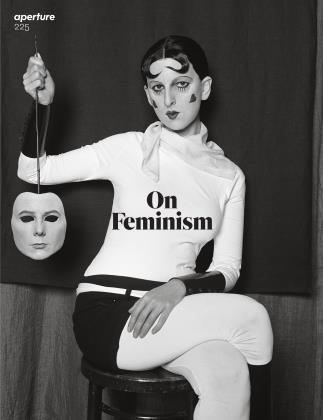Josephine Pryde
Alex Klein
In his endearingly titled book Thumbelina: The Culture and Technology of Millennials (2014), the philosopher Michel Serres reflects upon his college-age students, who, for him, embody a new technological order. Not only do they communicate and relate in new ways, but their bodies are decidedly different—their heads are quite literally in their hands. For artist Josephine Pryde, too, this fusion between the body and the technological device is not just a cyborgian proposition, but an opportunity to imagine what our heads might now be freed to do if our fingers do the thinking. This point of contact between the hand and the machine, which Pryde describes as "the join,” also represents a gap between what we can literally see and the immense effects that these changes will inevitably have on the physical world. It is within these fissures that Pryde suggests a new body of semiotics in which we might begin to detect a shift in our sensorial modes, psychic compositions, and perhaps even our gendered stereotypes.
In an ongoing series of photographs, loosely referred to as Für Mich (For me), Pryde depicts hands, most of them sporting brightly colored nail polish in hip hues (which she distinguishes from traditional shades of "vampy Helmut Newton red”), cradling an array of objects, many of which are touch-screen devices. At first these images could be mistaken for an advertising campaign for the latest smartphone. However, upon further examination, one notices that other interactions have been given equal consideration—a hand touching a piece of driftwood, hands holding gifts given to Pryde by her commercial gallerists, a hand laid on a chest—prompting us to consider alternate ways of accessing time, value, and knowledge. Photographed with a macro lens, the images crop the heads out of frame and focus decidedly on the subjects’ hands, evoking a sense of touch and the haptic potential embedded within the photographic.
Art historians such as Helen Molesworth have looked to the haptic within the visual arts as a way to break with sensorial hierarchies and to consider domains such as craft that are often culturally coded as feminine or queer. Although Pryde specifically does not disclose the genders of her subjects in Für Mich, without faces to read, viewers rely on the assumptions that they make from the nail polish and the models’ poses. In so doing the artist subtly outs her audience’s preconceptions and perhaps prejudices, challenging us to consider not just how we expect bodies to present themselves and images to function, but how new technologically informed ways of moving—dragging, dropping, and swiping—might relate to gestures and mannerisms that are perceived to be masculine or feminine. As curator Jamie Stevens—who organized Pryde’s exhibition at the CCA Wattis Institute for Contemporary Arts before it traveled on to the Institute of Contemporary Art, University of Pennsylvania, in Philadelphia—prompted viewers to ask, "Can what we call virtual content also reach back into the parts of our lives we might otherwise consider non-virtual?”
Here, touch sensitive might be thought of not just as a technological term, but as an action, a sensation, or a sentiment.
It describes a world we now expect to be responsive to our presence. This concept is underscored by the way that Pryde has, to date, installed her evolving series with titles that read like rapid-fire texts, such as lapses in Thinking By the person iAm and These Are Just Things I Say, They Are Not My Opinions.
If circulation in terms of the market and image production can also be inferred from this body of work, it is made manifest by the miniature train Pryde places in the different exhibition venues for viewers to ride on in a prescribed route through the gallery. Creating a recursive loop, it further mediates the experience of the photographic display, while simultaneously highlighting our own limited attention spans. At once a biting critique of institutional modes and technological transformations, the train is also a wry commentary on the role of interactivity in the museum. Für Mich as a phrase in itself lends a layered reading to the project: similar to Serres’s title, it refers to Pryde’s observation of art-school entrance examination panels, during which young candidates sometimes respond to the tricky question about their motivation to study art with the remark that they want to do so for themselves. While certainly the phrase points to the foregrounded status of the self in the age of social media, we might also interpret it as a reflection on the artist herself, and the pleasure she derives from making her work.
Alex Klein is Dorothy and Stephen R. Weber (CHE ’60) Curator at the Institute of Contemporary Art, University of Pennsylvania.
PICTURES
 View Full Issue
View Full Issue
More From This Issue
-
 Words
WordsModern Women
Winter 2016 By David Campany -
 Pictures
PicturesHannah Starkey
Winter 2016 By Sara Knelman -
 Editor's Note
Editor's NoteOn Feminism
Winter 2016 By The Editors -
 Words
WordsRenée Cox A Taste Of Power
Winter 2016 By Uri Mcmillan -
 Words
WordsOn Defiance
Winter 2016 By Eva Respini -
 Words
WordsThe Feminist Avant-Garde
Winter 2016 By Nancy Princenthal










